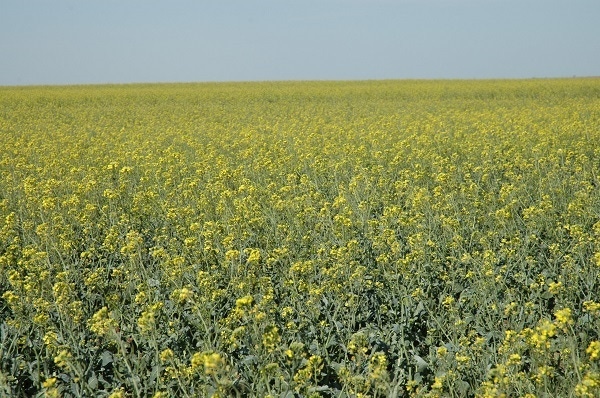August 21, 2014

In June of 1990 I had the opportunity to tour Russian and Ukraine winter grain farms and visit with the farm managers. They all said that mono-cropping wheat was not good for the land and that yields could be increased by using crop rotation. My comment was that Oklahoma and Texas Panhandle farmers didn’t have a choice except to mono-crop wheat.
That may have been the case in 1990, but it may not be the case now. Some producers have established a rotation of wheat and canola. Research has shown that wheat yields are increased by 10 percent on a wheat/wheat/canola (canola every third year) rotation system and by 15 percent on a wheat/canola (canola every other year) rotation system.
Weed control is one advantage. Few methods are available to control rye and other weed problems in wheat. Rotating wheat and canola may break weed and disease cycles.
For the latest on southwest agriculture, please check out Southwest Farm Press Daily and receive the latest news right to your inbox.
Negative aspects of raising canola include limited ability to graze cattle and a relatively steep learning curve. Growing and harvesting canola requires additional equipment and possibly more attention than wheat, especially at harvest.
Production budgets
Two economists and a farmer who rotates wheat and canola developed budgets that compared wheat only, wheat/wheat/canola and wheat/canola rotation for the 2015 marketing year. They developed budgets for the Garfield County (Enid) Oklahoma area.
The budgets showed that the wheat/canola rotation weighted cost of production is expected to be about 20 percent higher than the wheat-only cost of production. With expected yields of 40 bushels per acre for wheat and 47 bushels per acre for canola, the gross returns were $232 per acre for wheat only. The weighted average gross return was $306 for wheat/wheat/canola and $332 for wheat/canola rotations.
The cost (variable or cash cost) of wheat only was $177. The weighted variable cost for wheat/wheat/canola was $208 and $220 for wheat/canola rotations.
Expected net returns were $55 for wheat only, $98 for wheat/wheat/canola and $112 for wheat/canola. The outcomes were based on a projected June 2015 wheat price of $5.80 and a June 2014 canola price of $8.30. The $5.80 June 2015 wheat price was calculated using the KC July 2015 wheat contract price and a minus 50-cent basis.
Using 23 years of Oklahoma wheat prices and U.S. canola prices, the relationship between Oklahoma wheat prices and U.S. canola prices was calculated. Most of the time, canola prices were about 50 percent higher than wheat prices. The June 2015 canola price was estimated by multiplying the wheat price ($5.80) by 1.5.
If crop production is the goal, economics clearly support rotating wheat and canola. The positive factors are higher projected net returns, a higher quality wheat product and less stress due to diseases and weeds. If a producer likes challenges and the opportunity to learn, a wheat/wheat/canola rotation or wheat/canola rotation will provide this opportunity.
Because canola-only cost of production (not weighted with wheat cost) is about 44 percent higher than wheat-only, a wheat/canola rotation increases the risk of loss. A complete loss of the wheat crop is $177. A complete loss of a canola crop is $255.
To continue to export Oklahoma and Texas Panhandle wheat, producers must produce a low dockage, near zero percent foreign matter (clean) milling quality wheat. Without a crop rotation system, clean wheat is difficult to produce.
Rotating wheat and canola (either wheat/wheat/canola or wheat/canola) results in higher yields, cleaner grain, and higher profits. All that is required is knowledge, work, and persistence.
About the Author(s)
You May Also Like






